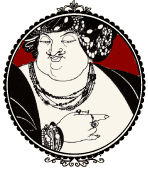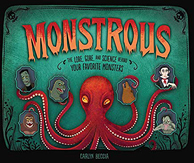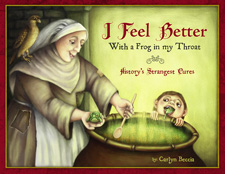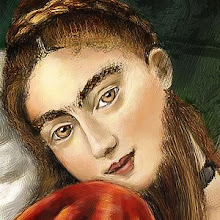 Yesterday was Groundhog day and of course that chubby, little rodent saw his shadow. Six more weeks of winter to follow. But shadow be damned...I think if someone gave poor, little Punxsutawney Phil a nice, woolly sweater and scarf set then he just might stick around. In New England, we have a saying - There isn't bad weather, just bad clothing choices. Lately, I don't leave the house without my cozy bomber hat. (mine is of course fake fur). Sure, I may look like I am about to drive an Alaskan dog sled to the grocery store, but at least I am warm. Phil is obviously poorly dressed for the task of weather predictions. Which brings me to the history bit...
Yesterday was Groundhog day and of course that chubby, little rodent saw his shadow. Six more weeks of winter to follow. But shadow be damned...I think if someone gave poor, little Punxsutawney Phil a nice, woolly sweater and scarf set then he just might stick around. In New England, we have a saying - There isn't bad weather, just bad clothing choices. Lately, I don't leave the house without my cozy bomber hat. (mine is of course fake fur). Sure, I may look like I am about to drive an Alaskan dog sled to the grocery store, but at least I am warm. Phil is obviously poorly dressed for the task of weather predictions. Which brings me to the history bit... Throughout history, most people have preferred heavy fabrics in the winter and light fabrics in the summer. But after the French Revolution, staying warm took a back seat to looking fashionable. Ancient Greek styles dominated aristocratic circles, and despite its impracticality, one of the more popular dresses was the diaphanous Chignon a la Grecque popularized by the leading Les Merveilleuses such as Madame Récamier (shown here). *
Throughout history, most people have preferred heavy fabrics in the winter and light fabrics in the summer. But after the French Revolution, staying warm took a back seat to looking fashionable. Ancient Greek styles dominated aristocratic circles, and despite its impracticality, one of the more popular dresses was the diaphanous Chignon a la Grecque popularized by the leading Les Merveilleuses such as Madame Récamier (shown here). * The dress featured flowing muslin fabrics cut in an empire waste and decolletage that was sure to leave the wearer bitterly longing for the warmer fashions of the pre-Revolutionary era. Some women were even rumored to wet their dresses down to get that extra clingy, weather-be-dammed, wet t-shirt look. In this fashion plate to the right, this lovely dame is clearly folding her arms because she left her cloak at home and now must endure a night of goosebumps.
The dress featured flowing muslin fabrics cut in an empire waste and decolletage that was sure to leave the wearer bitterly longing for the warmer fashions of the pre-Revolutionary era. Some women were even rumored to wet their dresses down to get that extra clingy, weather-be-dammed, wet t-shirt look. In this fashion plate to the right, this lovely dame is clearly folding her arms because she left her cloak at home and now must endure a night of goosebumps. Americans were always quick to keep up with French fashions, but the Chignon a la Grecque was far too scandalous for even the most daring Washington fashionistas. Nevertheless, Elizabeth Patterson (shown to the left) didn't let a little thing like partial-nudity dissuade her from trying the latest trends. Elizabeth had married Jerome Bonaparte, Napoleon's younger brother and was determined to make her entrance into Washington unforgettable. She certainly succeeded. Men crowded around Elizabeth to catch a glimpse of her half-naked body beneath the translucent fabrics. Her audacious attire almost got her shunned from polite society when hostesses insisted that she could not come calling unless she put some clothes on.
Americans were always quick to keep up with French fashions, but the Chignon a la Grecque was far too scandalous for even the most daring Washington fashionistas. Nevertheless, Elizabeth Patterson (shown to the left) didn't let a little thing like partial-nudity dissuade her from trying the latest trends. Elizabeth had married Jerome Bonaparte, Napoleon's younger brother and was determined to make her entrance into Washington unforgettable. She certainly succeeded. Men crowded around Elizabeth to catch a glimpse of her half-naked body beneath the translucent fabrics. Her audacious attire almost got her shunned from polite society when hostesses insisted that she could not come calling unless she put some clothes on. Before the Revolution claimed its first fashion victims, Marie Antoinette had attempted a simpler style of dress in her chemise a la reine. (shown to the left painted by Vigee-Lebrun) Unfortunately, this style met with as much condemnation as her more excessive styles. The public was so shocked to see their queen dressed-down like a country milkmaid that Lebrun was forced to withdraw her shocking painting from the Salon of the Academie royale de peinture et de sculpture. To make matters worse, this simpler English style threatened the French economy by relying on imported muslin. But really, could Marie Antoinette win? She was criticized for too much ostentation and then criticized for too little.
Before the Revolution claimed its first fashion victims, Marie Antoinette had attempted a simpler style of dress in her chemise a la reine. (shown to the left painted by Vigee-Lebrun) Unfortunately, this style met with as much condemnation as her more excessive styles. The public was so shocked to see their queen dressed-down like a country milkmaid that Lebrun was forced to withdraw her shocking painting from the Salon of the Academie royale de peinture et de sculpture. To make matters worse, this simpler English style threatened the French economy by relying on imported muslin. But really, could Marie Antoinette win? She was criticized for too much ostentation and then criticized for too little.The light dresses of the Grecian goddess finally met its demise when Napoleon waged war against the fashionable ladies of Paris. Napoleon was known to have fireplaces sealed up so that ladies who came to soirees inappropriately dressed were forced to shiver in disgrace. But when has a little discomfort ever changed fashion trends?
 If you are around the same age as me, you might have looked like just as much of a tramp (and just as cold) in those 80's short mini-skirts. My friends and I used to leave the house in layers. The first layer had our respectable mother-approved clothing and the last layer had what might be described as "street corner" attire. (something like what is shown here... I am embarrassed to admit that this picture is a Halloween costume.)
If you are around the same age as me, you might have looked like just as much of a tramp (and just as cold) in those 80's short mini-skirts. My friends and I used to leave the house in layers. The first layer had our respectable mother-approved clothing and the last layer had what might be described as "street corner" attire. (something like what is shown here... I am embarrassed to admit that this picture is a Halloween costume.)Napoleon eventually killed the Chignon a la Grecque fashion by banning the importation of Indian muslin. The ban forced women to rely on heavier domestic fabrics such as taffeta, velvet and brocade and probably kept many ladies from freezing for the sake of fashion.
*Unfortunately, no one bothered to tell trendy French ladies that the Greeks had achieved the sheer look by layering transparent fabrics over warm wool.
Sources and Further Reading:
Chazin-Bennahum, Judith. The Lure of Perfection: Fashion and Ballet, 1780-1830, New York, NY: Routledge, 2004.
The Queen's Hair: Marie-Antoinette, Politics, and DNA, Desmond Hosford, Eighteenth-Century Studies, Vol. 38, No. 1, Hair (Fall, 2004), pp. 183-200












3 comments:
You know, I always windered about those beautiful, half-dressed ladies in portraits. In an era of double glazed windows, energy-efficient heating systems, and thermal socks, I still shiver through winters in upstate PA bundled up in enormous hooded swatshirts and jeans (hairstyles and static electricity be damned, pass me my wool hat!). I could only imagine how icy-cold those fashionistas wear in their tiny muslim dresses during those harsh winter nights in big drafty houses.
Back in ancient times, when I was a junior in high school (1977)it was de rigueur to dress in a black body suit, borrowed from your brother button fly boot-cut Levis, thick leather belt and Adidas sneakers - worn in all sorts of weather. That meant no coats in winter. My friends and I had horrible arguments with our mothers, but somehow managed to escape to the bus stop without outerwear. I must confess I felt the cold, but fashion ruled the day. When the time came that I put a coat on (or carried an umbrella) without being told, I knew I was growing up.
I too shiver when I look at these low-cut sheer dresses and wonder how the ladies must have suffered to look fashionable and correct for their peers, beaus, and other admirers. With elegant, insouciance they draped exquisite wraps about their arms looking beautiful, but surely not benefiting from the warmth.
Now I don't even want to wear a chain around my neck in winter because it gets cold!!! At some point we all turn into dowagers.
Nanina
Amy - I wouldn't have survived long either in a muslin dress. You can't pry my wool clothes away from me in the winter.
Na - ha! Yes, I am proud to say that I am a dowager too. I do remember that wearing a coat was a huge fashion faux pas. At least leg warmers were in style in the 80's for some time. (although those off the shoulder torn sweat shirts canceled any warmth out.)
Post a Comment